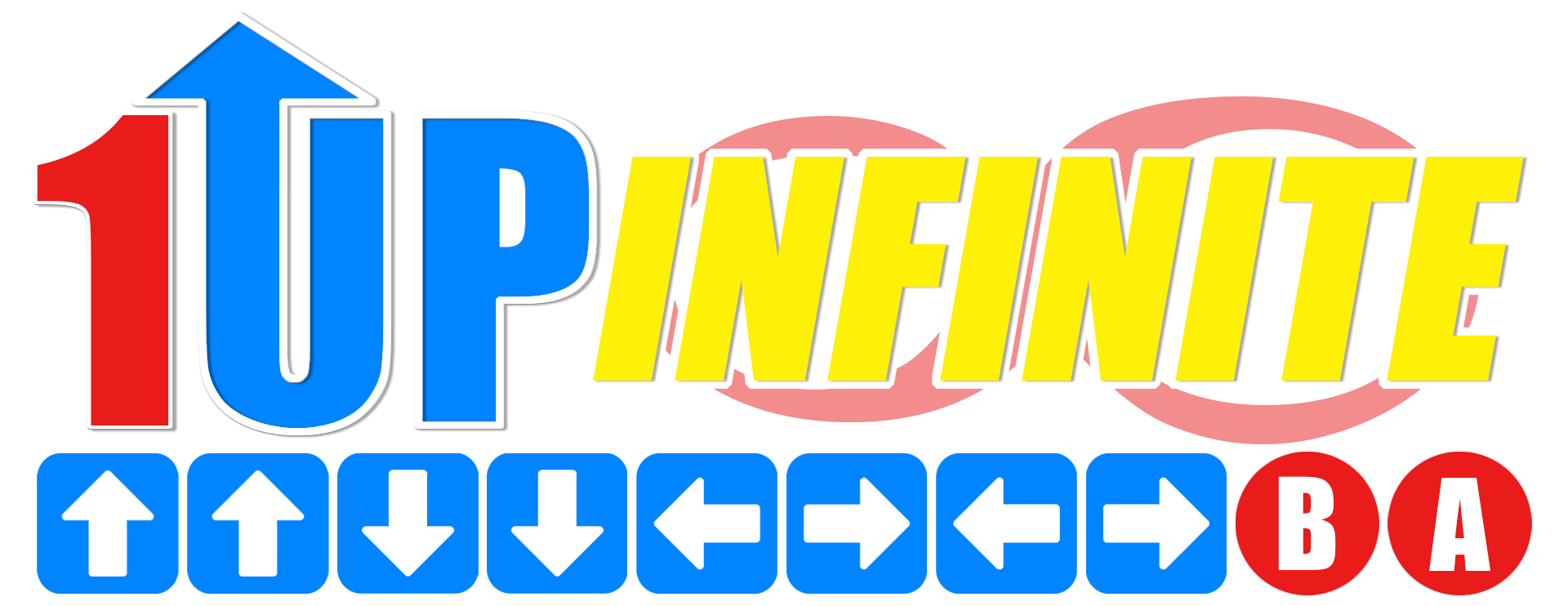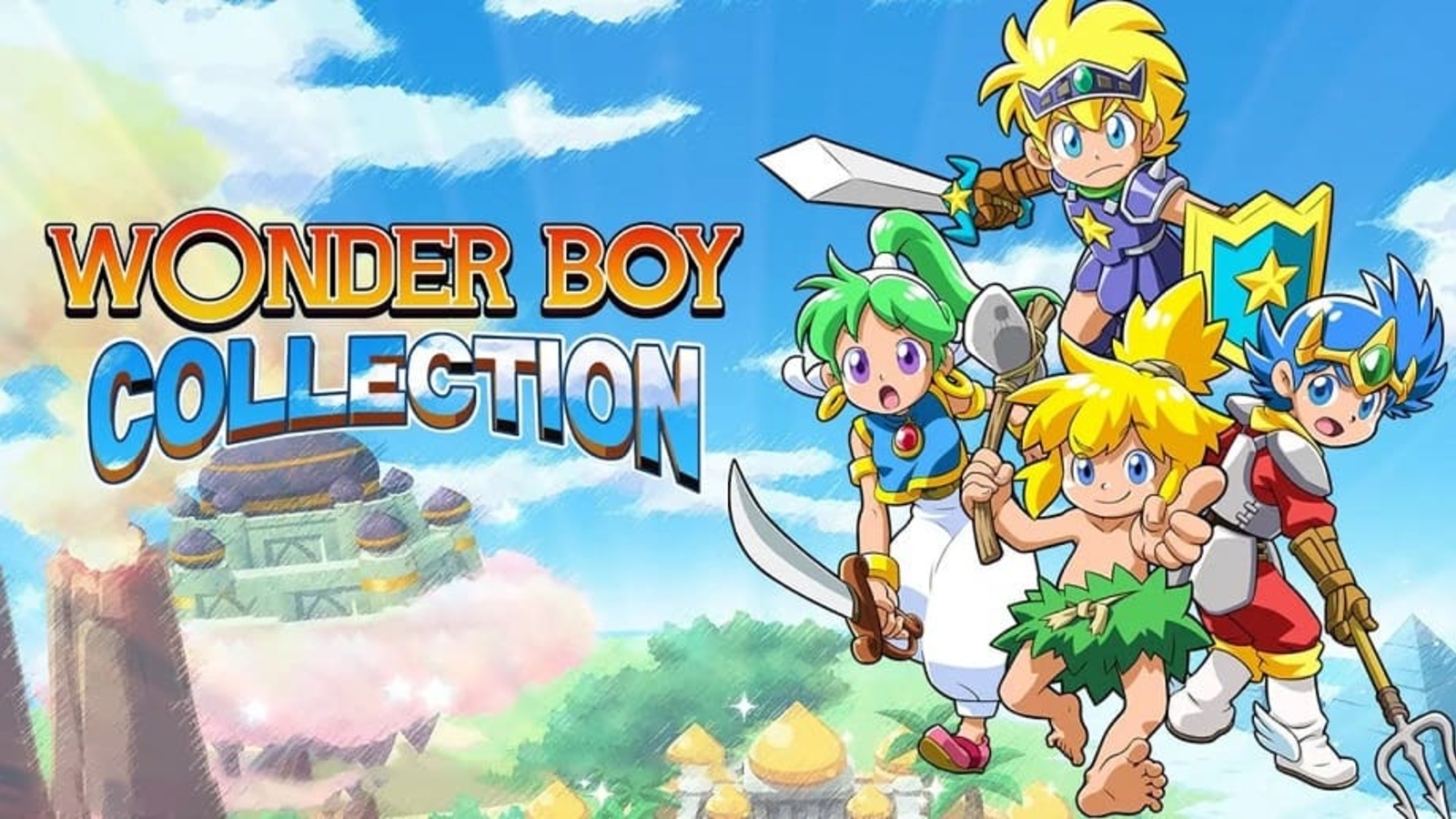Wonder Boy Collection
The Wonder Boy Collection is a series of four games from the Wonder Boy series, developed by Westone and published by SEGA. These days, it's a joint effort between ININ Games, Bliss Brain, and many other contributors who help put an awesome compilation together. As with Cotton Fantasy, this review was made possible by ININ Games and many others. It's not my first time diving into the Wonder Boy franchise. Last year I got a chance to look at Asha In Monster World and this time I have a chance to play the original the remake was based on.
Wonder Boy
The first game featured in Wonder Boy Collection is the first game in the series, Wonder Boy. Released in 1986, the Wonder Boy franchise saw humble beginnings like most during this era as a simple arcade treasure. The objective is to lead Wonder Boy on a quest to save his girlfriend from a tyrannous demon king. Wonder Boy's gameplay is a 2D platforming side-scroller, with its premise and gameplay similar to Super Mario. There are key differences, as Wonder Boy cannot jump on top of enemies to defeat them.
The only way for him to fight is by throwing a hammer he receives from an egg. While he has an infinite supply of hammers, Wonder Boy can only throw a certain number until it goes on cooldown. Rather than a conventional timer, Wonder Boy runs on stamina that decreases over time. If WB's stamina reaches 0, then he loses a life.

There is food scattered across the level and eating it will replenish his stamina by a set amount. The trick to making it to the end of each level involves eating as much food as you can while also avoiding obstacles. Not only will obstacles slow WB down but they will also lower his stamina.
Other powerups received from the eggs are a skateboard that increases his speed but limits his ability to change directions. There's also a chance a fairy will assist him, much like the star in Super Mario. Not all items are beneficial as there's a chance Death can make an appearance, severely lowering WB's stamina over time. At the fourth level of each world, WB fights a boss and moves on to the next stage.
In each of the four games, players can change settings that include resolution scaling, graphical changes, and difficulty settings. Players can increase the starting number of lives and the intensity of the games themselves. The save states and rewind function also work well, with players able to reset their progress with the push of a button. For a rewind function, it's seamless in Wonder Boy Collection, as it's done in real-time.
Wonder Boy in Monster Land
A direct sequel, Wonder Boy In Monster Land was released in 1988 once again as an arcade original title. While this and the previous game were both ported to consoles, the games featured here are in their original arcade form. I'm not sure what it was with video game sequels needing to be vastly different from their original at the time.
Monster Land takes a page out of Castlevania 2's RPG-centered book in that there are towns to explore and an abundance of enemies to fight. Players have a task to defeat an area boss but they are unaware of its location at first. The player can enter bars and purchase drinks in which the bartender will give them advice. Special weapons like bombs and magic also help in making boss encounters easier to manage.

What makes Monster Land an interesting title is how packed the content is for the era this game belonged to. Many of its mechanics were things players would see in console games but here was a coin-op arcade game that gave players the same experience. The main caveat is the timer in the form of an hourglass, replacing the stamina bar from the previous game. If the sand falls to the bottom of the hourglass, the player loses one heart. Taking damage will also cause the player to lose hearts and should they lose them all, it's game over.
The hourglass timer resets upon picking one up as well as replenishing lost hearts. Players can upgrade their standard weapon to deal more damage as well as wear better equipment to sustain more damage. Overall, Monster Land is vastly different from its simple gameplay of the past. It will become the blueprint for the rest of the series as it makes its way to exclusive console gaming in the future.
Wonder Boy in Monster World
Here we start to shift away from the arcade origins of the Wonder Boy Collection and instead focus on its pride and joy, the Mega Drive. Released in 1991, Wonder Boy In Monster World is an Action RPG, fully fleshed out and building on Monster Land before it. A fun bit of trivia is that this is actually the fifth game in the series even though Monster World 2 came out before Monster World in Japan. Wonder Boy 3 was released in the arcades as Wonder Boy 3: Monster Lair in Japan, with worldwide releases dropping the "Wonder Boy 3" from the title.
This was because Wonder Boy 3, the first made-for-console game in the franchise, was being developed and released in the west on the Sega Master System. This game would be released on the PC Engine in Japan as Monster World 2 in 1991 to avoid any confusion with the arcade Wonder Boy 3. So what gives in naming Monster World in Japan? Name it Monster World 3 and name Monster Land's console version the original Monster World just because!

If you're still reading this and don't have a headache, this is why although it's the fifth game in the series, most fans consider this the successor to Monster Land. Things like inventory management, defeating monsters for gold, and an RPG-style story are all present in Monster World. The added benefit of not having a timed game helped usher in new fans to the series. The story follows a young man, Shion, who is set to embark on a journey to save the world from monsters. Shion requires the aid of local residents to help him on his task and he finds himself in a fairy village where a group of mushroom men is causing chaos.
It was at this point I realized that the games featured here are mere emulations of their original counterparts. This was evident when it came for me to use an ocarina. Playing a certain tune on the ocarina will allow certain doors to open, but the notation to play the songs refers to the Mega Drive/Genesis controls. That's fine, but when A, B, and C become Y, X, and B, it becomes a challenge to follow instructions on the screen. Thankfully I memorized the notes and attuned them to the buttons on the Switch, but this would have been avoided had the buttons changed to their respective consoles. This is a 30-year-old game so it is what it is, but it's still a nitpick I had. Overall it didn't ruin the experience and I would say this was the most fun I had in the collection...
Monster World 4
Of all the games I've played in the collection, Monster World 4 was the title I had the most experience with. Not because of the game itself, but because of its remake. In 2021, Artdink developed a remake of Monster World 4 titled Wonder Boy: Asha in Monster World. I've had the opportunity to review the game and showered it with much deserved praise. You can read it here via Lost Summer Dayz if you'd like! With that in mind, I'll focus exclusively on Monster World 4, the game that inspired Asha in Monster World to begin with.
After my explaination on the naming conventions based on Monster World, savvy readers can guess that this was a Japanese exclusive. Were it released in the West, it would be titled Monster World 2 or Wonder Girl in Monster World. That's because the protagonist is a girl, with a Middle Eastern origin that predates Shantae by a few years. The RPG elements are simplified, making Monster World 4 rooted as a platformer than an Action RPG.


Asha, the protagonist, is set off to become a warrior and make a name for herself. She eventually gets wrapped up in a quest to save a kingdom from monsters. In Monster World 4, Asha can jump, spin, climb ropes, and overall perform agile moves compared to the previous protagonists. She also has access to a shield that she can use to deflect enemy attacks but not all of them. Eventually, she even gets a monster pet of her own that is used for puzzles and clearing dungeons.
Of the games featured, this one only recently saw a release outside of Japan. A translated version was released on a 2012 compilation via XBLA and PSN. This is only its second appearance, third if you count the game as a bonus for certain copies of Asha in Monster World. Its charming visuals, identifiable music, and overall light-heartedness of the characters and protagonist makes this one of the standout games of the collection.
Wonder Boy Collection Continues Preservation For A New Generation
Like I've mentioned for games like Cotton Fantasy, there are many series that players have had fond memories of during the 90s. Wonder Boy was always a series that never got a chance to enjoy the fruits of its labor. With many ways for players to return to the classics and as remakes are being developed, newer generations of gamers are open to these opportunities. While older players can reminice on a time when they put their quarter up at the arcade or played at home. Wonder Boy Collection is an earnest effort of preserving the classics and although it's not perfect or groundbreaking, the games themselves hold up the test of time throughout the decades.
Wonder Boy Collection is available on the Sony PlayStation 4 and Nintendo Switch.

